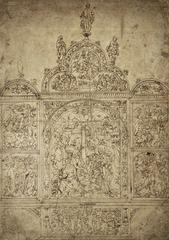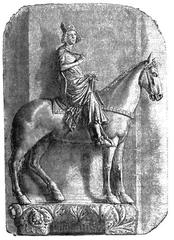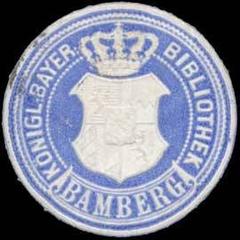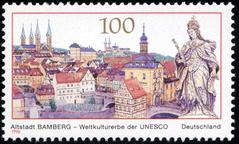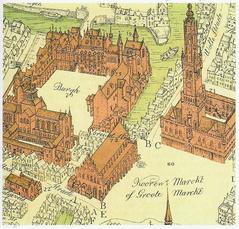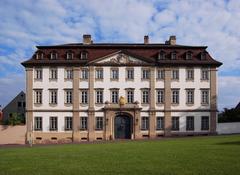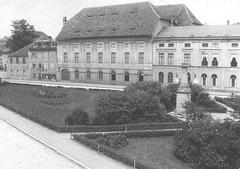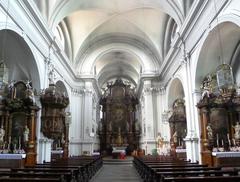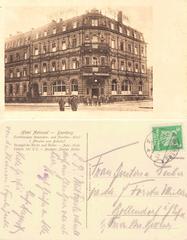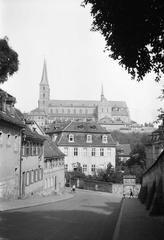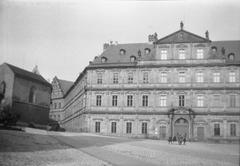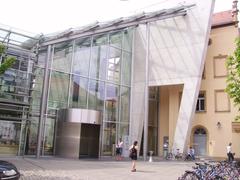University Museum Islamic Art Bamberg: Visiting Hours, Tickets, and Travel Guide
Date: 14/06/2025
Introduction
Located in the heart of Bamberg’s UNESCO World Heritage old town, the University Museum Islamic Art Bamberg is a unique destination for those wishing to explore the artistic and cultural achievements of the Islamic world. At its core is the renowned Bumiller Collection—one of the world’s largest and most significant collections of early Islamic art, with a particular focus on Persianate metalwork from the 7th to the 13th centuries. Founded on the vision of Manfred Bumiller, the museum is both an academic center and a vibrant public resource, offering a diverse array of artifacts, guided tours, and digital resources.
As a part of the University of Bamberg, the museum is a hub for scholarly research, education, and public engagement. Visitors can expect an immersive journey through medieval craftsmanship, cross-cultural exchange along the Silk Road, and the aesthetic brilliance of Islamic artisans. With accessible facilities, regular guided tours, and a central location near Bamberg’s other landmarks, the museum is well-suited for art lovers, students, families, and travelers alike. For those unable to visit in person, the museum’s online resources—including virtual tours and high-resolution imagery—offer a window into its treasures. (University Museum Islamic Art Bamberg)
Table of Contents
- History and Origins of the Bumiller Collection
- Collection Highlights and Cultural Significance
- Visitor Information: Hours, Tickets, and Access
- Travel Tips and Nearby Attractions
- Accessibility and Guided Tours
- Special Events and Educational Programs
- Photography, Digital Resources, and Virtual Tours
- FAQs
- Preservation and Academic Legacy
- Plan Your Visit
- References
History and Origins of the Bumiller Collection
Visionary Collecting: Manfred Bumiller
The museum is the result of Manfred Bumiller’s (1928–2018) lifelong passion for Islamic art. Beginning with just three pieces in the early 1980s, Bumiller, a self-taught expert, amassed over 7,000 artifacts. His focus on pre-Mongol metalwork from eastern Iran (Khurasan) formed the collection’s nucleus, but it soon expanded to include ceramics, glass, manuscripts, woodwork, and numismatics.
Establishing the Museum
Bamberg was chosen as the collection’s home due to its academic environment, notably Germany’s only Chair in Islamic Art History and Archaeology. In 1995, Bumiller’s collection was housed in two restored medieval townhouses (Austrasse 27 and 29). In 2008, a partnership with the University of Bamberg formalized the museum’s role as both a public institution and academic center dedicated to Islamic art and archaeology.
Collection Highlights and Cultural Significance
Early Islamic Metalwork
The museum boasts the world’s largest collection of early Islamic bronzes, originating from regions such as Iran, Afghanistan, and Turkmenistan. Visitors can see intricately crafted writing implements, oil lamps, jewelry, amulets, and more. Techniques like repoussé, chasing, and inlay reflect artisans’ skill and the interconnectedness of cultures along the Silk Road.
Notable artifacts include:
- 11th-century Seljuq bronze ewer by Ahmad—a masterpiece of casting and engraving.
- Incense Burner Lid (Ghazni, Afghanistan, 12th–15th Century)—an example of openwork and calligraphy (BC 6149).
- Padlock in the Shape of a Horse (Afghanistan, 11th–12th Century)—showcasing both creativity and functionality (BC 3728).
Diversity Across Media
Beyond metalwork, the museum displays ceramics, glassware, illuminated manuscripts, wood, ivory carvings, and coins. The Luschey Collection, with its focus on pottery, is also featured in a dedicated gallery. Thematic displays illustrate how motifs and techniques were adapted across materials, emphasizing the unity and diversity of Islamic art. (Bumiller Collection)
Visitor Information: Hours, Tickets, and Access
Opening Hours
- Tuesday to Sunday: 10:00 AM – 5:00 PM
- Closed: Mondays and public holidays
Admission
- Adults: €6–8 (varies by exhibition)
- Reduced: €3–5 (students, seniors)
- Children: Free (under 16 or 18, depending on exhibition)
- Guided Tours: Available weekends and by appointment (English tours on request)
- Tickets: Purchase online (Bumiller Collection Website) or at the entrance
Accessibility
- Fully wheelchair accessible with elevators and accessible restrooms
- Assistance available on request
Travel Tips and Nearby Attractions
The museum is located in Bamberg’s old town, easily accessible by foot from the train station or by local buses. Public parking is nearby. Combine your visit with other UNESCO-listed sites such as:
- Bamberg Cathedral
- Old Town Hall (Altes Rathaus)
- Little Venice
- Sammlung Ludwig
Accessibility and Guided Tours
The museum is designed for visitors of all ages and abilities. Guided tours (in German and English) can be arranged for individuals or groups, enhancing the visitor experience with expert insight into the collection and its context.
Special Events and Educational Programs
The museum regularly hosts temporary exhibitions, academic workshops, lectures, and family-oriented activities. These programs highlight topics like Islamic calligraphy, ceramics, and medieval technologies, and often coincide with Bamberg’s cultural calendar. Check the official museum website for current events and programs.
Photography, Digital Resources, and Virtual Tours
- Photography: Permitted without flash in most exhibition spaces.
- Virtual Resources: High-resolution images, object descriptions, and virtual tours are available online, making the collection accessible to a global audience.
- Audiala App: Download for guided audio tours during your visit.
Frequently Asked Questions (FAQ)
Q: Are tickets available online?
A: Yes, tickets can be purchased via the museum’s official website.
Q: Is the museum accessible for visitors with disabilities?
A: Yes, the museum is wheelchair accessible and offers support on request.
Q: Are guided tours available in English?
A: Yes, with advance arrangement.
Q: Is the museum suitable for children and families?
A: Absolutely—interactive exhibits and workshops are available.
Q: Can I combine my visit with other attractions?
A: Yes, the museum is centrally located near Bamberg’s main historical sites.
Preservation and Academic Legacy
The Bumiller Art Foundation, under Gertrud Sackerlotzky, ensures the collection’s preservation and ongoing engagement. The museum supports academic research with a specialized library, seminar rooms, and walk-in depots. Since 2015, a branch of the collection also operates in Berlin, furthering its educational mission. (Bumiller Collection)
Plan Your Visit
For the latest information on opening hours, events, and ticketing, consult the official museum website. Download the Audiala app for audio guides, and follow the museum’s social media channels for news and updates. Enhance your trip by exploring nearby heritage sites, and consider group tours or family workshops for a richer experience.
Summary: Key Points and Recommendations
The University Museum Islamic Art Bamberg impresses with its extensive Bumiller Collection, offering unparalleled insight into the artistry and cultural diversity of the Islamic world. Visitors benefit from clear access, affordable ticketing, guided tours, and engaging educational programs, all within a welcoming and accessible environment. Its integration with the University of Bamberg ensures a vibrant blend of public outreach and scholarly excellence.
To make the most of your visit:
- Book tickets and tours in advance online
- Check for current exhibitions and events
- Download the Audiala app for enhanced interpretation
- Combine your visit with other Bamberg landmarks
Whether you visit in person or explore the museum’s digital resources, the University Museum Islamic Art Bamberg is a cultural gem not to be missed. (University Museum Islamic Art Bamberg)
References and Further Reading
- University Museum Islamic Art Bamberg: Explore the Historic Bumiller Collection and Plan Your Visit, 2025, University of Bamberg
- Discover the University Museum of Islamic Art in Bamberg: Visiting Hours, Tickets, and Highlights of Germany’s Premier Islamic Art Collection, 2025
- Exploring the University Museum Islamic Art in Bamberg: Visiting Hours, Tickets, and Collection Highlights, 2025, The Bumiller Collection
- University Museum of Islamic Art Bamberg: Visitor Guide, Opening Hours, Tickets & Cultural Highlights, 2025, University of Bamberg

